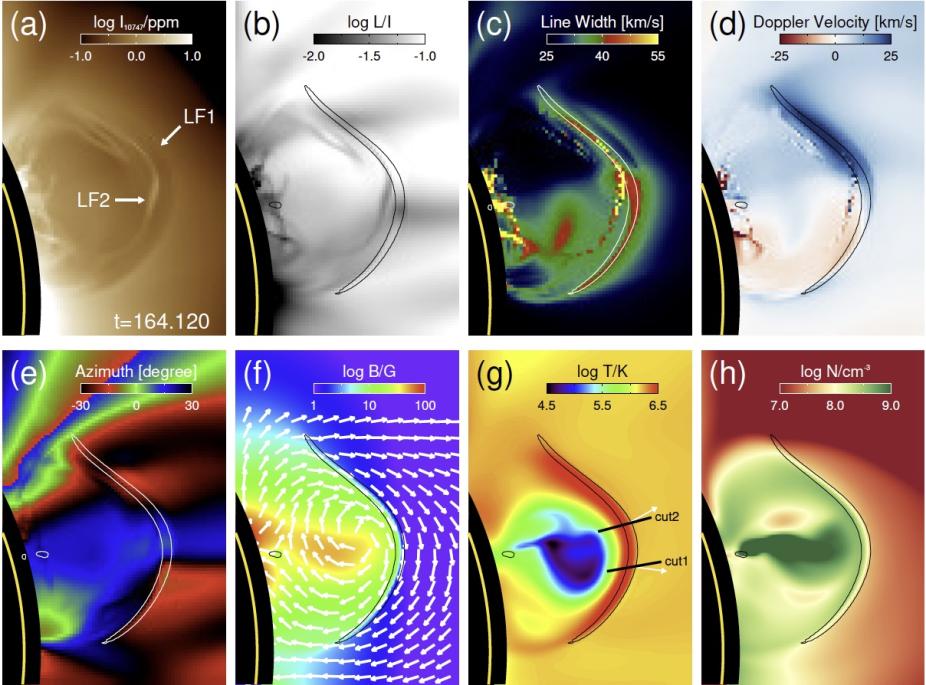
Synthesized results of the Fe xiii 10747 line, along with several POS cross section quantities in the model during CME eruption (a)-(e): Intensity (Stokes I), linear polarization degree(L/I), line width, Doppler velocity, and azimuth derived from synthesized signals. (f)-(h): Magnetic field, temperature, and density distributions in the POS. The arc-shaped contour in each panel represents ∇ · v = −0.05. Two leading fronts (LF) can be distinguished in panel (a). Each white arrow in panel (g) represents the POS projection of the deduced shock normals. The solar disk is indicated by the yellow curve in each panel. The region below 1.05R⊙ is masked.
Solar Physics: The proposed COronal Solar Magnetism Observatory (COSMO) Large Coronagraph (LC) will provide unique observations to study coronal mass ejections (CMEs) with its ability to diagnose the magnetic field and plasma properties in the solar corona. Here we take a realistic magnetohydrodynamic CME model, and synthesize the signals of several coronal emission lines (CELs) to perform forward modeling of COSMO LC observation of a CME. We use the Stokes parameters of the Fe xiii 10747 Angstrom line to diagnose the magnetic field and plasma properties of the CME flux rope. The results show that COSMO LC can provide magnetic field measurements of CME progenitors with a high spatial resolution (2′′ pixels). By using a worse resolution (6′′ pixels), the COSMO LC observation may also be used to qualitatively study the evolution of magnetic field during the CME eruption. We then use the synthetic signals of several other CELs to diagnose the physical conditions in the CME leading front, including the shock. The COSMO LC observations of the Fe xiii 10798/10747 Angstrom and Ar xiii 8300/10143 Angstrom line pair can provide density diagnostics of the front. By observing several CELs with different formation temperatures, the COSMO LC can be used to diagnose the temperature and ionization states in the front. We suggest that the Fe xiii 10747 Angstrom line should be given the highest priority when observing CMEs, while observations of the Fe xiii 10798 Angstrom, Fe xiv 5303 Angstrom, Fe xv 7062 Angstrom, and Ar xiii 10143 Angstrom lines can also provide valuable information on CMEs.